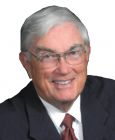Alcoholism
Marketing Madness
Thousands of ads and billboards connect alcohol with the good life.
Posted March 6, 2020

As an adolescent, my friend and coauthor James B. wanted nothing less than a happy and fulfilling future. In part because of the euphoria caused by alcohol, he was certain that a good life included a lot of heavy drinking. Some of his best memories were getting drunk with friends, and he had no doubt that it was a behavior worth repeating again—and again.
As an underage heavy drinker, James had plenty of company. One in every four high school students drink, and they consume 90 percent of their alcohol by binge drinking, on average, nine drinks at a time. To put this figure in perspective, heavy drinking for men is defined as five drinks on one occasion or more than fourteen drinks per week. For women, the number is lower—four drinks in one sitting or more than seven drinks a week.
For many students, the shared experience of intoxication is the foundation of their social lives—a perspective that attending college often reinforces. The culture of binge drinking is so ingrained in most U.S. universities that one in every five students meet the medical criterion for alcohol abuse, and every year more than 1800 die from alcohol-related causes.
The appeal that alcohol has for young people is easy to understand. Drinking is a symbol of adult independence and autonomy. For most people, the euphoria that heavy drinking produces is an especially pleasant sensation, and teenagers are by nature sensation seekers. They often struggle with emotional, school, and family problems that overwhelm their coping strategies, which are still a work in progress.
Pouring fuel on this fire is the unrelenting advertising campaigns of transnational alcohol companies in search of new customers. Like most teenagers, by the time James had his first drink he had seen thousands of commercials, magazine ads, and billboards connecting alcohol with the good life. These compelling messages appealed to his adolescent yearnings to be attractive, to appear cool and confident, and to find acceptance in a fun-loving circle of friends. None warned him that alcohol was an addicting drug.
Not by accident, alcohol advertising is increasing most rapidly on Internet sites and at social venues—sporting events and concerts, as two examples—that are popular with young people. Companies know all too well that underage drinking generates more than $20 billion in yearly profits, and that brand preference starts as early as the third or fourth grade. Considerable research confirms that the more alcohol ads teenagers see, the more likely they are to begin drinking—and to drink heavily.
At the same time, the alcohol industry has also successfully redefined the phrase “responsible drinking.” Today, the vast majority of young people and even adults believe that responsible drinking is not drinking in moderation, but drinking heavily with a designated driver. It is easy to see how this marketing success serves the alcohol industry’s bottom line, creating the appearance of social responsibility while increasing sales by promoting risky drinking.
Many parents likewise communicate an attitude of acceptance for their children’s heavy drinking. Thanks to alcohol’s intoxicating properties, they often recall their own adolescent drinking in a euphoric light. Since they survived—perhaps with humorous stories to tell—underage drinking may seem like a harmless rite of passage whose consequences are more likely to be comic than tragic. If parents are heavy or addicted drinkers, they may provide their teens with alcohol and a home-based venue for drinking.
Ironically, the social support for binge drinking among young people has remained entrenched even while a growing body of medical research confirms its grave consequences for the developing adolescent brain. These consequences, which we explore more fully in a later chapter, increase exponentially when alcohol is combined with illegal drugs or prescription pills.
Feeling Good
"When I was a high school freshman, a senior girl invited me to the prom, and some older kids at the dance gave me wine coolers. With just a drink or two, I felt a lot more confident and less like an outsider. All I had ever wanted was to have fun and be accepted, and now I was one of the cool kids.
That summer I was introduced to the world of college partying at a cheerleading camp. One night after drinking into a blackout state—I was still functioning in the world but like a zombie—I passed out in a bush. The next morning I woke up in an empty dorm room on a mattress covered with vomit. A few hours later, I was on a golf course with my father and my grandfather, who was a heavy drinker. Feeling emboldened and upbeat, I wondered if they could tell that I had a hangover and had just joined their secret adult society."
—James B.




